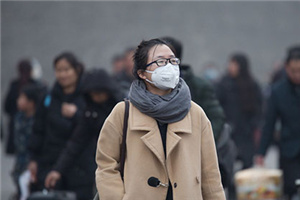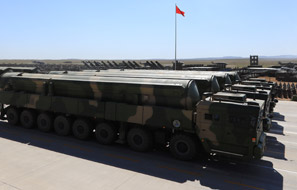HIV testing a key battlefield in China's AIDS fight
BEIJING -- The keywords "HIV testing" on Taobao, China's top e-commerce site, return page after page of rapid testing kits for sale for less than $8 each.
The top seller, which bundles kits that test both blood and fluid from the cheeks and gums, claims monthly sales of about 20,000 units.
"I was extremely nervous until I tested negative," said an anonymous user. "I secretly bought this. If it was not about AIDS, I wouldn't have to hide anything."
The proliferation of these kits points to a key focus in China's current fight against HIV/AIDS -- testing.
AIDS experts said the number of people in China tested for HIV/AIDS every year has nearly quadrupled over the past decade, but it remains a challenge to reach the estimated 200,000 to 400,000 people who are unaware of their HIV-positive status.
ONE IN THREE
Wu Zunyou, Chief Epidemiologist of the Chinese Center for Disease Control and Prevention (China CDC), said the number of HIV test-takers hit 169 million last year and continues to grow.
"It means one in every three people taking the HIV test in the world has it done in China," he said at a seminar hosted by the Bill and Melinda Gates Foundation in Beijing ahead of World AIDS Day on Dec 1.
Wu, who is also a consultant for UNAIDS, said that in 2008, only 45 million people in China took the test. The figures steadily rose as China built an extensive HIV testing network. Most people take the test before major surgery, blood donation, or pregnancy.
The current testing rate -- more than 12 percent of the total population -- is considered highest volume for anywhere in the world, Wu said.
China's proactive fight against the AIDS epidemic has yielded results. Blood transmission of the virus, once rampant through illegal blood sales or sharing of needles among drug users, has been halted, with mother-to-child transmission almost eliminated.
Official data show that China has about 718,270 people living with HIV/AIDS. As of June 30, 221,628 people had died of AIDS-related diseases. In the second quarter, 36,886 new cases were reported.
"People often confuse 'newly reported cases' with 'new infections.' Newly reported cases are mostly infections in the past few years," said Wu, who attributed the growth in new cases over the decade to the success of a rapidly expanding testing network.
OUT OF REACH
Wu's colleague, Jiang Yan, said China has one of the world's most extensive HIV testing networks, covering more than 30,000 labs whose services extend to almost every county.
"But certain high-risk people remain out of reach," said Jiang, director of the National HIV/HCV Reference Laboratory of the China CDC.
Young gay men feature prominently among the new cases. While some have been tested through peer group programs, shy first-timers are likely to avoid the test after high-risk activities, the experts said.
Jiang said the use of urine self-collection kit is now seen as a solution. Vending machines that sell one type of these kits have been installed at more than 30 universities in Beijing and four provincial-level areas.
A user can buy a kit and collect urine, and leave a urine sample in the vending machine's deposit drawer. Volunteers will then collect the samples and have them examined in an authorized lab. The test taker checks the result online or via a mobile app. The entire process is anonymous.
Jiang said both school administrators and students have welcomed the testing method.
"Before, HIV blood tests were available in school clinics, but the turnout was poor," Jiang said. "No one wants to show up at the school clinic and ask for an HIV test."
She said the program will continue expanding to more regions in 2018.
Wu expects rapid testing kits to become mainstream in the future.
"The direction is to offer people more choices to get tested by themselves," Wu said.
He said it is essential for high-risk people to know their status so that they can be treated earlier.
"Modern medicine is able to keep viral loads in the body low so that the patient poses little threat of infecting others. A person with HIV/AIDS can also reach the average life expectancy if he stays on medication." Wu said. "But the crucial first step is to find out the status."
























